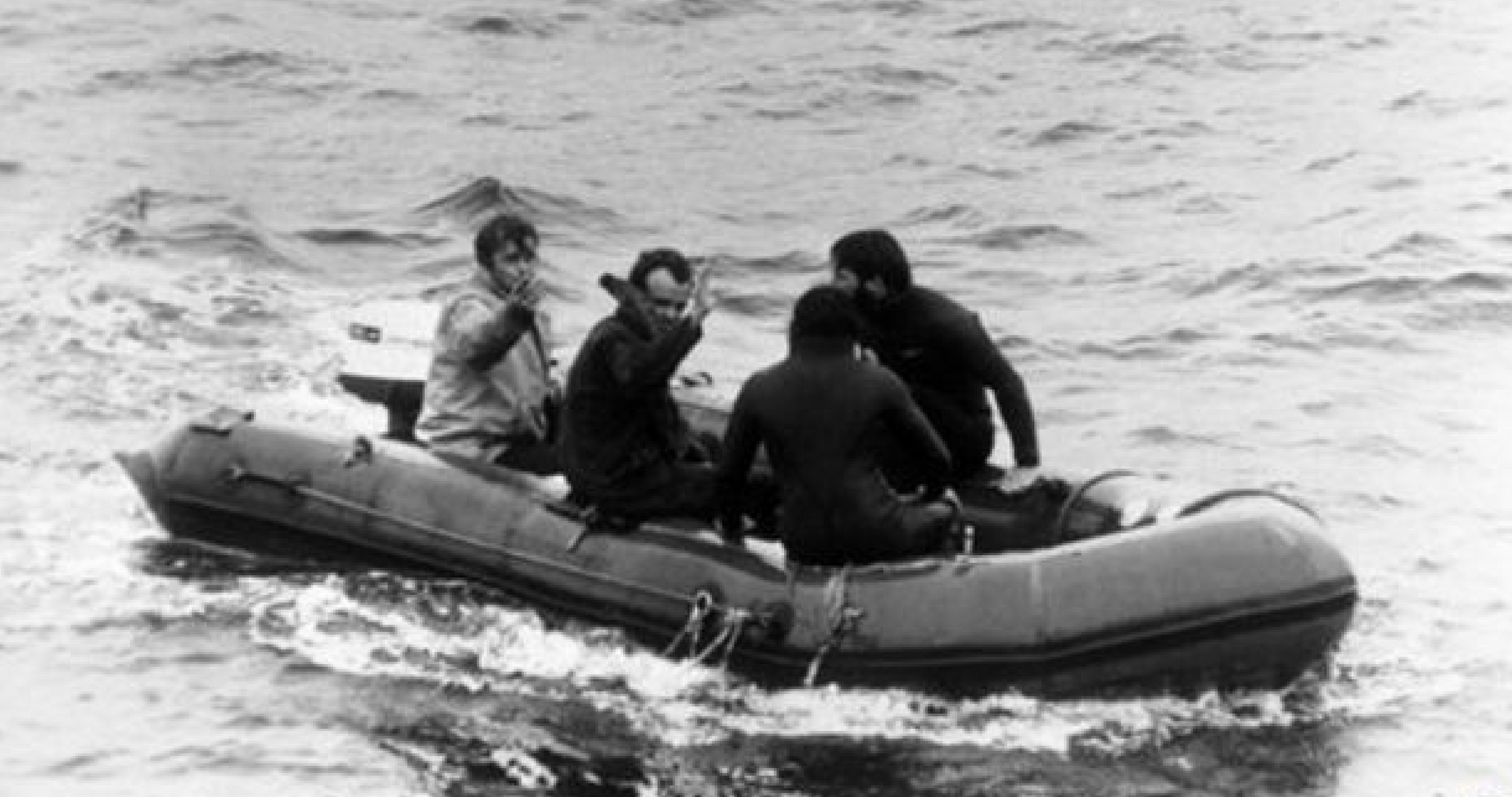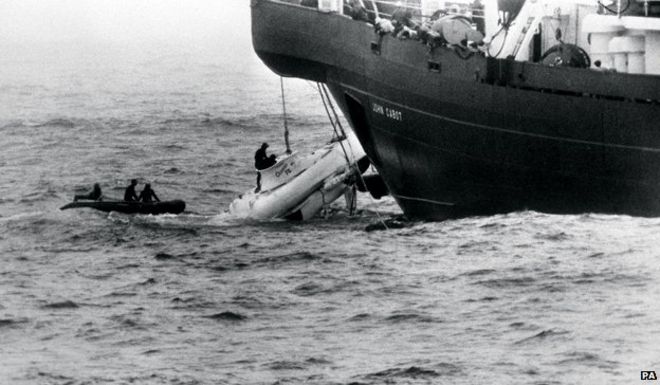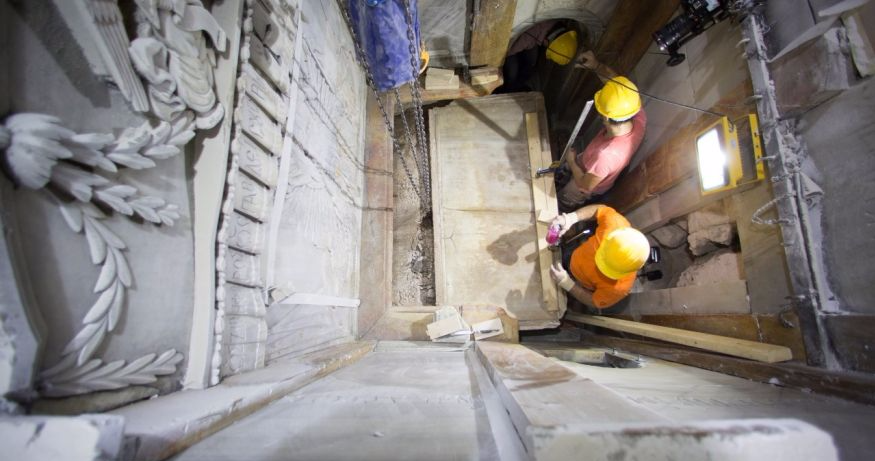My mom's worst fear is drowning, and I think that's fair. Being submerged in water and being totally aware you can't breathe has to be terrifying.
For two British sailors in 1973, they had to endure something almost as bad, if not worse. Pilot Roger Chapman and senior pilot Roger Mallinson were on board Pisces III, in a deep-sea submersible, a type of submarine. Things went wrong, and the two sailors were left stranded 1600ft at the bottom of the Atlantic Ocean for three days.
Here's what happened, and how they survived.
The Dive
Chapman and Mallinson were tasked with completing a routine dive to lay transatlantic telephone cable on the ocean floor.
"It took about 40 minutes to sink down to not far off 1,600ft (500m) and a bit faster to get back up," says Chapman. "We'd do eight-hour shifts, going along the surface of the seabed at half a mile an hour, setting up pumps and jets which liquefied the mud, laying cable and making sure it was all covered. It was very slow, murky work."
Mallinson had just come off a 26 hour shift, so he was already exhausted. It turns out the Pisces III had required some repairs, and while he was fixing it Mallinson decided to change the oxygen tank.
"It was quite ample to run the dive, but for some reason I decided to change it to a full one, which was no mean physical feat as it was very heavy," the sailor said. "I could have got into trouble for changing a half used bottle, but as it happens, if I hadn't, we wouldn't have lived."
The two pilots kept a video diary of their mission for records, and that's how they managed to share their experience of being trapped at the bottom of the sea.
Continue reading to find out how the two sailors were literally swallowed by the ocean floor, and how they managed to survive.
The Downfall
8 hours after their mission began, Mallinson and Chapman were hit with trouble.
"We were waiting for the towline to be attached to lift us and take us back to the mother ship. There was lots of banging of ropes and shackles - as normal during the last phase of the operation - when suddenly we were hurtled backwards and sank rapidly. We were dangling upside down, then heaved up like a big dipper," says Chapman.
The pilots shut off the electrical systems and dropped a 400lb lead weight to make the Pisces III lighter as it fell. In complete and total darkness, Chapman and Mallinson plunged to the bottom of the ocean.
"It was about 30 seconds until we hit. We turned the depth gauge off at 500ft (152m) as it could have burst and got cushions and curled ourselves up to try and prevent injuries. We managed to find some white cloth to put in our mouths so we didn't bite our tongues off too," says Mallinson.
At 40mph, the pilots hit the bottom of the ocean 12 minutes after they started falling.
"We weren't injured but there was kit everywhere and we were hanging on to the pipe work. We just sat there with a torch. Unbeknown to us we had hit a gully, so we'd half disappeared below the seabed," says Chapman.
At The Floor
After hitting literal rock bottom, Chapman and Mallinson had to get their bearings. They made telephone contact with crews to inform of their relative safety, and the pilots began organizing the cabin of the vessel. With a 6ft diameter, there was not a lot of space to do much of anything.
One oxygen tank carried 72 hours of oxygen, but they had already used 8 hours for the initial dive. With 66 hours of oxygen remaining, they had to be conservative. No talking, no moving, just surviving.
"We hardly spoke, just grabbing each other's hand and giving it a squeeze to show we were alright. It was very cold - we were wet through. I wasn't in the best condition anyway as I had just suffered three or four days food poisoning from a horrible meat and potato pie. But our job was to stay alive," Mallinson says.
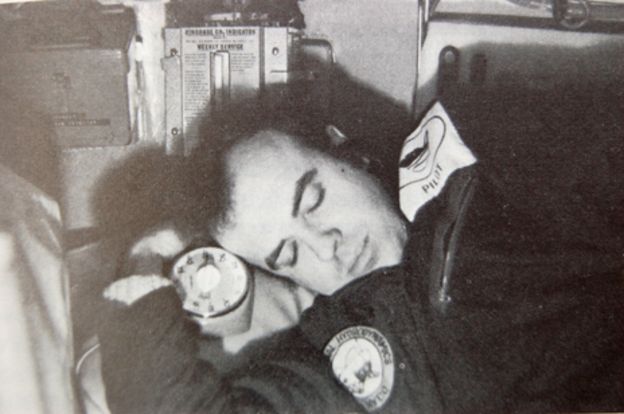
"We also started thinking about our families. I'd just got married, so could focus on my wife June. But Roger Mallinson had four young kids and a wife, and he began to get a tiny bit distressed about how they were," Chapman says.
Continue reading to find out how the two sailors were rescued, and how another vessel almost got stranded with them.
The Rescue
Chapman and Mallinson needed help, and fast. The day after the pilots had been sent into distress, three separate vessels were sent to try and help Pisces III.
Pisces II was sent down to the ocean floor, but the rope they had attempted to use to attach Pisces III tore off the submersible and had to come back to the surface.
Pisces V was also launhed, but lost power before it could reach the lost sailors. It surfaced, then returned, but was also unable to grab Pisces III.
Pisces II then descended again, but started to take on water the same way Pisces III had, so it had to resurface.
CURV III was enlisted to help, but it had an electrical problem so it was unable to launch.
By this point, Mallinson and Chapman were running out of hope.
"Then Pisces V was ordered to the surface just after midnight, which was a bit of a blow," says Chapman. "It was like we were back to square one with no-one around. Our 72 hours of oxygen was up, we were running out of lithium hydroxide to scrub the CO2, it was very manky and cold and we were almost resigned to thinking it wasn't going to happen."
Finally, CURV III was able to come down and fix a line to Pisces III. They had been found, and they were about to be saved.
As soon as we got off the sea bed it was very rough, very disorientating," says Chapman. "When they opened the hatch and fresh air and sunlight rushed in it gave us blinding headaches, but we were sorted, we were euphoric. But we were also a bit pathetic. It was quite difficult to climb out of the sub, we'd been so cramped up, we could hardly move."
After 84 hours and 30 minutes, Chapman and Mallinson were rescued.
"We had 72 hours of life support when we started the dive so we managed to eke out a further 12.5 hours. When we looked in the cylinder, we had 12 minutes of oxygen left," says Chapman.
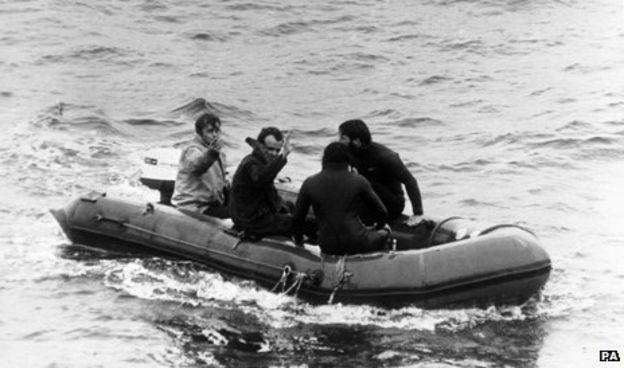
"Roger Chapman is a great lad. Somebody else might have panicked. If I could have chosen anyone to go down with it would have been him," Mallinson says.
Now, 44 years later, the story of Pisces III, Roger Chapman and Roger Mallinson is going to be made into a Hollywood movie. Will you be going to see it?
